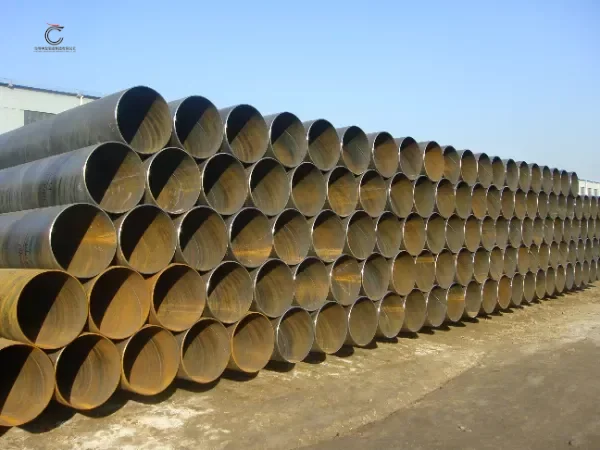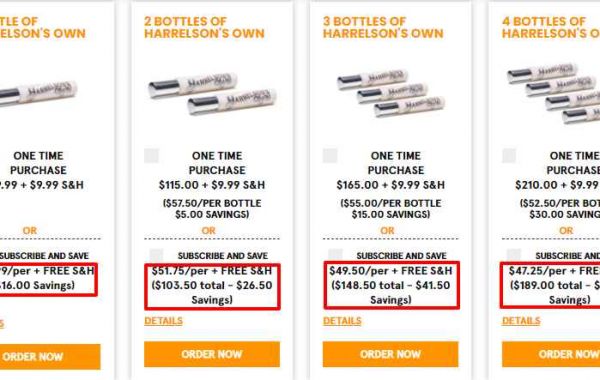In the process of welding the spiral steel pipe, various welding problems may occur, and the existence of these welding problems will seriously affect the safety of the use of the spiral steel pipe. The main problems in the welding quality of the spiral steel pipe are manifested in the outside and inside of the weld. The external and internal defects of the spiral steel pipe and their causes are analyzed below.
1.1 External defects of the weld of the spiral steel pipe and its causes
(1) Undercut.
In the process of spiral steel pipe welding, due to the presence of defects at the welding root that are lower than the surface of the base metal, such as depressions or grooves, this phenomenon is called undercut. From the point of view of the distribution of the undercut, it can exist on one side of the weld or on both sides of the weld; the undercut can appear continuously or intermittently.
Among the welding defects, undercut occurs more often and is one of the common welding defects of spiral steel pipes. The main reason for the undercut defect is that after the base metal is melted by the welding current during the welding process, it is not replenished in time, thereby forming a void, and this void becomes an undercut defect.
(2) Surface pores.
In the process of welding the spiral steel pipe, the temperature of the molten pool metal is relatively high. During this process, bubbles will be absorbed or released. Some bubbles do not overflow the metal surface during the condensation process, or burst on the metal surface, thereby forming pores. . From the distribution point of view, porosity not only exists in the inside and root of the weld, but also exists on the surface of the weld, which is also a common welding defect in the welding process.
(3) Surface cracks.
The surface crack of the spiral steel pipe is a metal crack on the welding surface, forming a crack. Surface cracks are divided into cold cracks and hot cracks. The more common one is hot cracks. The generation of hot cracks is also affected by comprehensive factors. During the welding process of the spiral steel pipe, when the metal solidifies into a crystallization, the low melting point eutectic will aggregate, and when the weld shrinks, the corresponding stress concentration will occur, resulting in cracks.

1.2 Internal defects of the weld of the spiral steel pipe and its causes
There are also welding defects such as pores and cracks in the weld. The phenomenon and causes of these defects have been introduced. The following is an introduction to the unique defects inside the weld of the spiral steel pipe.
(1) Incomplete penetration or fusion.
Incomplete penetration mainly refers to the phenomenon that the root of the joint is not fully fused during the welding operation. Lack of fusion mainly means that the welding materials are not welded together. These phenomena occur mainly because the slope of the weldment bevel is too small or the assembly gap is too small. When the blunt edge is too large or the edge is uneven, this phenomenon is also likely to occur. Other reasons for this phenomenon are that the welding current is too small and the welding speed is too fast, or the inclination angle of the electrode is wrong. When the welding groove of the spiral steel pipe is not clean, or the back root cleaning is not thorough, the phenomenon of incomplete penetration and fusion will also occur. The main harm of lack of penetration or lack of fusion is to reduce the effective working section of the weldment, and at the same time, the welding stress will be too concentrated, resulting in the appearance of the weldment.
Serious Problem.
(2) Slag inclusion.
In the welding operation of spiral steel pipe, if the welding slag remains on the surface of the weld or inside the weld, it is slag inclusion. Slag inclusion is also one of the more common welding defects. The occurrence of slag inclusion defects is mainly due to the improper selection of the groove width of the spiral steel pipe, or the unreasonable adjustment of the current and welding speed, and the improper swing amplitude of the electrode during the welding process. Due to the existence of welding slag in the weld, the strength of the metal will be destroyed, resulting in a decrease in the welding quality.
The above are some common problems of spiral steel pipes. If you have more questions, please contact Cangzhou Shenlong Pipe Manufacturing Co., Ltd.!








